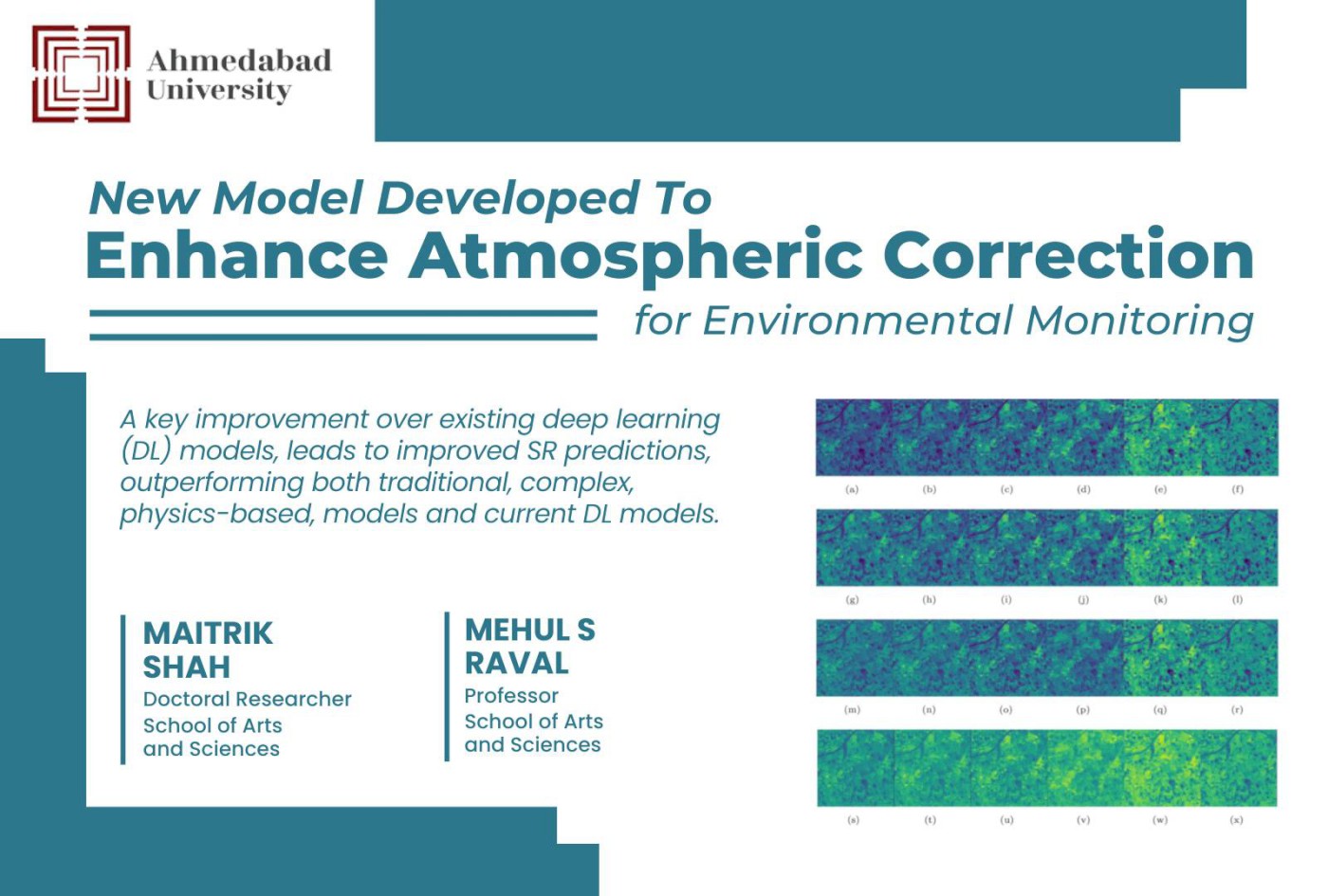3 January 2025
New Model Developed To Enhance Atmospheric Correction for Environmental Monitoring

Accurate surface reflectance (SR) prediction, crucial for applications like environmental monitoring, agricultural assessment, and climate studies, depends heavily on atmospheric correction (AC). AC accounts for distortions caused by atmospheric elements such as gases, aerosols, and water vapour.
New research, co-authored by our alumnus Maitrik Shah and Professor Mehul S Raval, introduces the Spatio-Temporal Atmospheric Correction (STAC) model, which integrates spatial and temporal information.
Traditional physics-based models for AC are often complex, require extensive calibration, and depend on atmospheric parameters, which can be challenging to obtain. In contrast, deep learning (DL) models offer simpler, more flexible, and extensible alternatives that exclusively rely on remote sensing satellite data. However, existing DL models for AC often overlook the dynamic nature of atmospheric conditions, which vary significantly over time.
To address this limitation, the STAC model incorporates temporal information by analysing sequential satellite images, effectively capturing the evolution of atmospheric conditions and leading to more accurate SR predictions. The approach, a key improvement over existing deep learning (DL) models, leads to improved SR predictions, outperforming traditional, complex, physics-based, and current DL models.
The research, which highlights the importance of incorporating temporal dynamics in DL-based AC for enhanced atmospheric correction, was published in the journal "Modeling Earth Ecosystems and Environment." Titled "A spatio-temporal deep learning model for enhanced atmospheric correction," it is authored along with Srikrishnan Divakaran (Krea University), Debajyoti Dhar (SAC-ISRO), and Hasit Parmar (Crest Data Systems).



